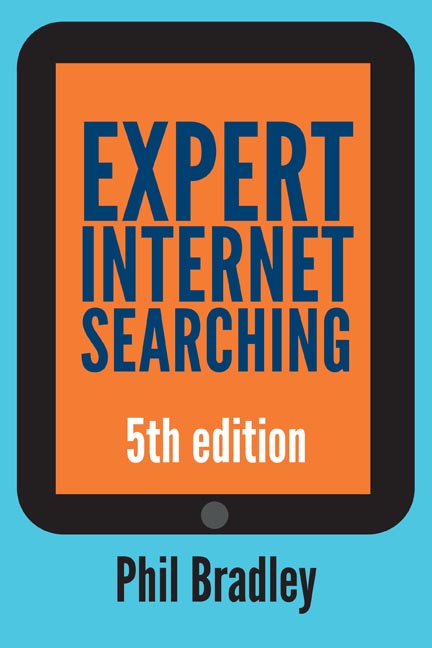Book contents
- Frontmatter
- Contents
- List of figures
- Preface
- Acknowledgements
- 1 An introduction to the internet
- 2 An introduction to search engines
- 3 The world according to Google
- 4 Other free-text search engines
- 5 Directory, clustering and similarity search engines
- 6 Multi- and meta-search engines
- 7 Social media search engines
- 8 Visual and image search engines
- 9 People-based resources
- 10 News-based search engines
- 11 Multimedia search engines
- 12 Specialised search engines
- 13 Hints, tips and the future
- Index
7 - Social media search engines
Published online by Cambridge University Press: 09 June 2018
- Frontmatter
- Contents
- List of figures
- Preface
- Acknowledgements
- 1 An introduction to the internet
- 2 An introduction to search engines
- 3 The world according to Google
- 4 Other free-text search engines
- 5 Directory, clustering and similarity search engines
- 6 Multi- and meta-search engines
- 7 Social media search engines
- 8 Visual and image search engines
- 9 People-based resources
- 10 News-based search engines
- 11 Multimedia search engines
- 12 Specialised search engines
- 13 Hints, tips and the future
- Index
Summary
Introduction
Before we can start to talk about search engines that cover social media we really need to take a step back and work out exactly what ‘social media’ is. It's a term that gets bandied about quite happily, and most people have a rough idea as to what it means, but let's explore it in a little more detail. If I visit Google and ask the question ‘What is social media?’ I get the response ‘websites and applications that enable users to create and share content or to participate in social networking’. Wikipedia says that ‘social media are computer-mediated techn - ologies that allow the creating and sharing of information, ideas, career interests and other forms of expression via virtual communities and networks’. That's a helpful start, so let's break it down a little further into a bullet-point format:
➡ content that is user-generated
➡ content that is shared with other people
➡ actively communicating and interacting with people in virtual communities
➡ online social networks.
We're all familiar with popular networks such as Facebook, Twitter, Instagram and Pinterest, but social media networks are far larger in scope and size than just those. For the expert searcher it's necessary to be able to identify appropriate networks and learn how to search them. Before we get to that point, however,
there are a few other things to take into account. First of all, the amount of user-generated data is immense, and growing at an exponential rate. In fact, it's growing so quickly there's hardly any point in providing you with facts and figures, since they will be out of date before I've finished writing this chapter, let alone by the time you read this book. However, in the previous edition of the book, published in 2013, I said that 50 hours’ worth of video was uploaded to YouTube every minute. This figure is now closer to 500. I said that 150,000 tweets were added every minute to Twitter, and this number is now closer to 400,000.
- Type
- Chapter
- Information
- Expert Internet Searching , pp. 111 - 126Publisher: FacetPrint publication year: 2017



